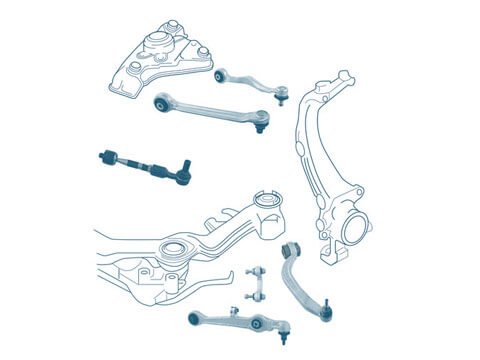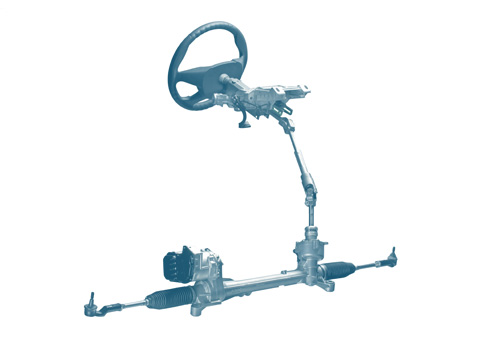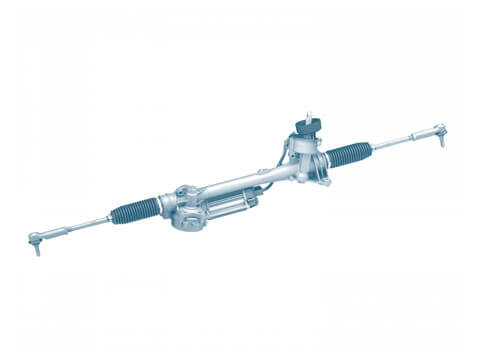Active front axle steering systems/active steering
Active front axle steering systems enable a steering angle to be produced at the front wheels which deviates from the steering wheel angle turned by the driver. This means they can provide the driver with support.
Function
Hydraulic and electric power steering systems help car drivers to steer by supporting the steering force. In these systems, the steering angle turned by the driver is transferred to the front wheels with a constant translation ratio. Through active front axle steering systems, additional steering angles can be added to or subtracted from the steering wheel angle defined by the driver. This does not enable autonomous driving, but does enable steering characteristics which are perfectly adapted to the driving situation – and therefore utmost comfort and driving stability. In current vehicles, exclusively superimposed systems are used for this. Superimposed steering is often integrated as an additional component in the steering system and can be combined with hydraulic or electric power steering. A central element of superimposed steering is a steering actuator which is either integrated directly in the steering gear or in the steering column between the steering wheel and steering gear. In certain systems, this additional actuator effects an additional torque on the steering shaft via an electric motor and a gear stage. In this way, it is possible to implement stepless adjustment of the steering ratio. An increase in the steering angle provided by the driver results in easier, more agile handling. As the steering wheel angle required to achieve the desired steering angle of the front wheels is much smaller, the driver can manoeuvre or park much more easily. Driving around tight bends is also much easier. At high speeds, such as on the motorway or main roads, superimposed steering reduces the specified steering angle. The steering reacts less sensitively to steering commands, leading to more stable, calm driving when driving straight ahead. The superimposed steering system is controlled by a control unit which is connected to the entire vehicle sensor system. It receives all the important signals, evaluates them, calculates the control values for the steering actuator and actuates the electric motor.
Advantages of active steering
- Agile vehicle handling, for example when manoeuvring and parking
- Higher level of vehicle stability at high speeds
- Increased safety in critical situations
- Lane keeping assist
- Emergency steering assist
- Vehicle dynamics control with steering intervention
- Parking aid
Safety
The driver is supported by active steering interventions. Active steering also increases driving stability. Driving safety can be further increased through the linking with other subsystems such as ESP or roll stabilisation. This is why active steering systems play a crucial role in active safety.





